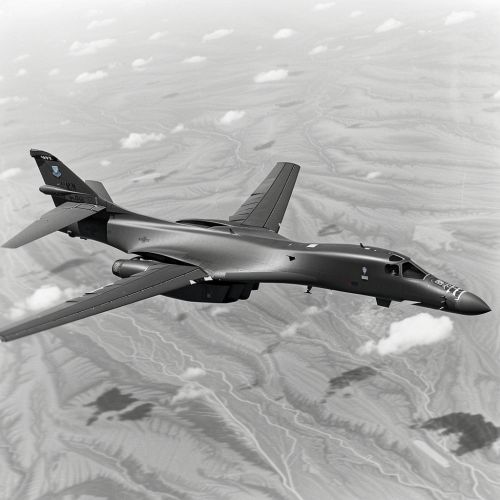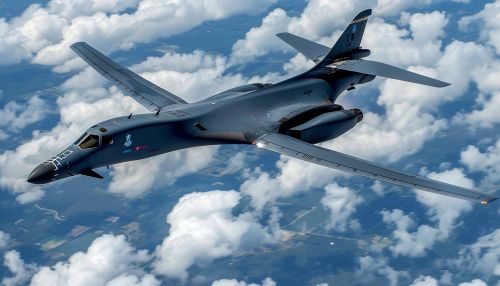B-1 Lancer
Overview
The B-1 Lancer, also known as the "Bone" (from "B-One"), is a supersonic variable-sweep wing, heavy bomber used by the United States Air Force (USAF). It is one of three strategic bombers in the USAF fleet as of 2021, the other two being the "Stealth Bomber" and the B-52 Stratofortress. The B-1 Lancer was first envisioned in the 1960s as a platform that would combine the Mach 2 speed of the B-58 Hustler with the range and payload of the B-52, and was meant to eventually replace both bombers.


Development
The B-1 Lancer's development started in the 1960s as a new kind of bomber that could travel at high speed, low altitude, and carry a large payload. The program was cancelled in 1977, but revived in 1981 as the B-1B version, with a focus on low-level penetration bombing. The B-1B entered service in 1986 with the USAF Strategic Air Command as a nuclear bomber. In the 1990s, the B-1B was converted to conventional bombing use. It first served in combat during Operation Desert Fox in 1998 and subsequently in the NATO action in Kosovo.
Design
The B-1 Lancer has a blended wing body configuration, with a variable-sweep wing. It has four turbofan engines, each capable of generating a maximum of 30,000 pounds-force (130 kN) of thrust. It is capable of carrying up to 75,000 pounds (34,000 kg) of payload internally. The B-1's speed and superior handling characteristics allow it to seamlessly integrate in mixed force packages. These capabilities, when combined with its substantial payload, excellent radar targeting system, long loiter time and survivability, make the B-1B a key element of any joint/composite strike force.
Operational history
The B-1 Lancer has been used in various combat scenarios since its introduction. It was first used in combat in support of operations against Iraq during Operation Desert Fox in 1998. In 1999, six B-1s were used in Operation Allied Force, delivering more than 20% of the total ordnance while flying less than 2% of the combat sorties. Since 2001, the B-1B has played a major role in the War on Terror, being used extensively in Afghanistan and Iraq.
Variants
There have been two main variants of the B-1 Lancer: the B-1A and the B-1B. The B-1A was the original design with four prototypes built. However, it was considered to be too expensive and was cancelled in 1977. The B-1B is a revised design with reduced radar cross-section and a lower top speed. It was built in greater numbers, with 100 aircraft being produced.
